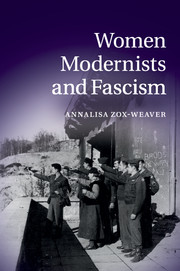Introduction
occupations
Published online by Cambridge University Press: 25 October 2011
Summary
Let us not speak ill of evil. It is too easy.
– Hélène CixousOn one level you wanted to conceal yourself in Hitler and his works. On another level you wanted to use him to grow in significance and strength.
– Don Delillo, White NoiseA short history of fascination
This is not another book about Hitler. That is to say, for all its interest in Hitler (and Hermann Göring and Maréchal Pétain), this book attempts neither to detail the piteous and terrifying reality of the Nazi leader nor to reconstruct in coherent form the impact fascist thought had upon modernists who conducted their creative work during the 1930s and 1940s, repudiating, embracing, or paying no heed to the movement’s ideological profanations. Much important work has recently taken up these questions, and I will draw upon these discussions of fascist aesthetics, reactionary modernism, “Hitler-in-us” theories, spectacle and performance in the politics and visual culture of modernism, and the ceaseless project of “explaining Hitler.” As such, an eccentric gathering of critical and archival sources serve the findings in this book.
This project concerns itself with the fascist dictator as constructed, reflected, and imagined by four artists who – though working during the period generally recognized as “modernist” – claim vastly different places in the canon, if indeed they appear there at all. While Gertrude Stein resides firmly in the pantheon of high modernism, Janet Flanner remains on the other side of the divide, having fashioned her own monumental status out of the rough stuff of journalistic reportage. Though she photographed innumerable luminaries of literary and visual modernism, Miller’s post-war photography is the focus of these pages, presenting as it does an implicit riposte to Leni Riefenstahl’s propagandist masterwork, Triumph of the Will. Riefenstahl avidly filmed herself and Hitler, and to this day remains an outlaw to modernist recuperation, though film scholars and historians invoke her infinitely imitable aesthetic and her resolute aversion to culpability. I apply a rather liberal definition of modernism, staying more or less within a traditional period of 1900–1945, working outside the canon more than in it, and engaging closely with the era’s homegrown innovations in visual culture and dictatorial authority. Close textual analysis is critical to my study but the circumstances and motivations of these cultural productions are equally so.
- Type
- Chapter
- Information
- Women Modernists and Fascism , pp. 1 - 23Publisher: Cambridge University PressPrint publication year: 2011

